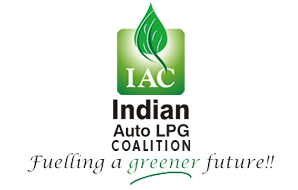Health Benefits
Gasoline and diesel have been the principal fuels used in mainstream road transport for over a century. But concerns over unhealthy air, climate change and dwindling reserves, coupled with the potential for disruptions to supply, have led to greatly increased availability of alternative, lower polluting energy sources for motor vehicles.
Since the middle of the 20th century, motor vehicle use has been closely associated with public health. This issue was brought to the forefront in California, where a rapidly growing and highly motorised population was subjected to severe photochemical smog episodes caused mainly by emissions of hydrocarbon products and oxides of nitrogen which reacted in the presence of California's strong sunlight. The severe incidence of respiratory and heart related illnesses attributable to the smog, coupled with the loss of visual amenity, led to the introduction of regulated limits for pollutant emissions from new cars and periodic checks on in used cars to ensure that they were being properly maintained.
The rapid increase in popularity of diesel powered vehicles, particularly in Europe and Asia, has focused a great deal of attention on the adverse health impacts of fine particulate matter (PM), which is emitted from diesel engines at much higher rates than from gasoline or gaseous fuelled engines.
The particles generated by internal combustion engines are especially dangerous because of their extremely small size, with most particles less than one micron (1/1000 mm) diameter. These tiny particles can penetrate into the deepest and most sensitive parts of the lung, even passing through the lung tissue directly into the bloodstream. Fine particles have been designated by the US EPA as a cancer causing pollutant, and are also directly the cause of serious respiratory and cardiac diseases and possibly brain damage.
For these reasons, the monetary health impact attached to PM is typically around 20 to 30 times higher per kilogram than for VOCs or NOx, and over 100 times higher than for CO.
Over recent years, controlling PM emissions has been the highest priority for regulators, and the maximum permitted emission levels have been reduced by a factor of 28 over the past decade or so. Many new technologies to reduce particle production inside the engine, and to filter particles out of the exhaust, have been developed to meet these more stringent regulations. NOx emissions, because of their influence on ozone as well as particles, are also a high priority.
LP Gas (often called Autogas when used as an automotive fuel) is the most widely available and accepted alternative fuel for road transport. Over 13 million LP Gas fuelled vehicles are now in use around the world, consuming over 20 million tonnes of fuel annually. As well as being practical and clean, the attractiveness of LP Gas in many countries is enhanced through fuel taxation policies which make it a much lower cost alternative to gasoline or diesel for both light and heavy duty vehicles.
In many instances, LP Gas fuel systems are fitted to vehicles as an aftermarket conversion, though in some markets, particularly in the Asian region, factory-built LP Gas vehicles represent a large and growing proportion of new vehicles.
Heavy-duty LP Gas engines have been in existence for almost 100 years in the USA, but for many decades their use outside the USA was extremely limited. A number of heavy duty LP Gas engines (mostly adaptations of their diesel counterparts) are now available from several of the larger engine manufacturers. These engines are being used in buses and mid-size trucks, mainly in the USA and South Korea, but increasingly in other regions around the world.
The very low gaseous and particulate emissions from LP Gas engines make them ideally suited for buses and delivery vehicles operating in urban areas.
When supply outweighs demand you would uncover a fundamental economic law which would steer down the price so as to generate greater sales.
















